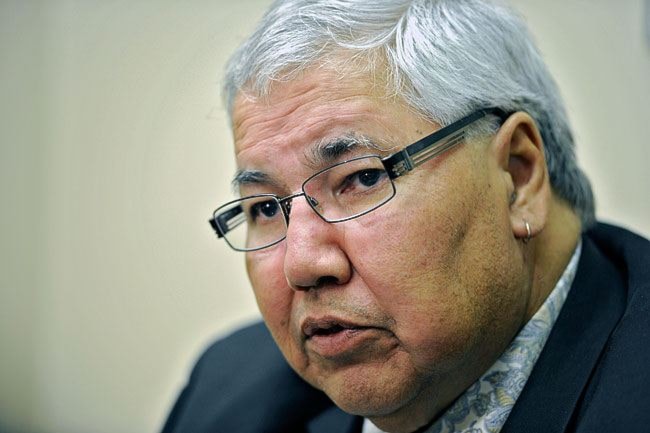If Japan took over Canada tomorrow and exercised its authority, would you still want to speak English?
Would you still want to wear jeans and runners instead of a kimono and geta or zori?
That was a hypothetical situation posed by the head of Canada’s Truth and Reconciliation Commission, Justice Murray Sinclair, who gave the Maddison Chair of Northern Justice lecture in Whitehorse this week.
He was drawing a comparison to the experience First Nations people had with residential schools.
Sinclair’s commission is touring the country, gathering stories and records. Former students have told how their mothers and grandmothers dressed them in freshly sewn clothes before sending them off with the Indian agents. When they arrived at the schools, they were separated from the siblings, stripped of their new clothes and then made to watch them burned.
Travel records prove the objective of the schools was to remove the children from the influence of their families and their communities. Children were often shipped far from home or even to other regions of the country, said Sinclair.
The level of education at the residential schools was poor. Many had no curriculum or standards. Most of the teachers had no formal training and the students were often used as cheap labour.
But all of this was kept hidden from the public in what Sinclair said was possibly the most intense “coverup” in Canadian history.
Data at the time showed nearly half of the students in the school system were dying. Conditions inside the schools were crowded, unsanitary and considered a “national crime.” But the bureaucrat who reported this was promptly fired.
Weekly pleas with local churches for money and food showed the schools could not afford to keep the students fed and healthy.
And almost from the beginning, there were reports of extreme physical, mental and sexual abuse.
Even after the stories started to get out, the schools continued to operate and the allegations of abuse were kept under wraps.
For much of his talk, Sinclair, who was Manitoba’s first aboriginal judge, spoke on residential schools in a legal context.
Like Canadians who would refuse to speak Japanese or wear wooden-planked sandals, First Nation people resisted the schools. Although they may have supported educating their children, they didn’t support having their families separated. When word started trickling out about the conditions, the resistance grew stronger.
But so, too, did the laws against aboriginal people, said Sinclair.
Parents faced legal consequences, like imprisonment, if they refused to let the Indian agents or RCMP take their children. The same was true if they tried to run and hide. A “pass” system was established, forcing aboriginal people to get signed permission from their Indian agent to leave the reserve.
Another law prevented them from seeking legal assistance. Lawyers caught helping aboriginal people were stripped of their licence, said Sinclair.
In 1891, the Citizenship Act was changed to say that “Indians” were not citizens. If they wanted to vote, they had to give up their Indian status. They were also barred from selling their produce or crafts in some places.
The residential school system was more than just wrong, said Sinclair.
Even if the abuse could be ignored, the act of taking children of one race and removing them from their families against their will, to indoctrinate them into another race’s way of doing things, is now considered an act of genocide under the United Nations’ Declaration of Human Rights, he said.
The Canadian Charter of Rights and Freedoms, which turns 30 this year, is helping right some of these wrongs.
Under section 35, the Canadian government is obligated to reconcile aboriginal rights and title.
But so far the government hasn’t done that, Sinclair said.
Instead, the courts have been forced to rule on aboriginal rights to turn things around.
“And as a judge I can tell you, courts are a terrible vehicle for social engineering,” said Sinclair.
But individuals can do much to help the reconciliation process move along, he said.
One of his slides simply stacked the words: “Listen, Learn, Lend a hand, Lead.”
A lot of things will have to change with how we live our lives, he said.
In terms of its legal and political structure, Canada has been built on racist thinking, said Sinclair. Courts have a culture and it’s fundamentally white-European.
There has to be change to reconcile the past, but Sinclair said he doesn’t see that happening in his lifetime.
“But I hope we start the conversation in my lifetime,” he said. And it’s clear the greatest abuse now is done by aboriginal people to themselves.
That’s not going to change until they have a conversation about respect, he said.
There will be a “spinning of wheels” unless there is more respect.
“Reconciliation is about respect.”
Contact Roxanne Stasyszyn at
roxannes@yukon-news.com
